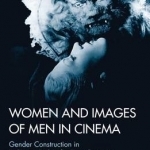Women and Images of Men in Cinema: Gender Construction in la Belle et la Bete by Jean Cocteau
BookThis item doesn’t have any media yet
2015 | Philosophy, Psychology & Social Sciences
Women and men in cinema are imaginary constructs created by filmmakers and their audiences. The film-psychoanalytic approach reveals how movies subliminally influence unconscious reception. On the other hand, the movie is embedded in a cultural tradition: Jean Cocteau's film La Belle et la Bete (1946) takes up the classic motif of the animal groom from the story of Cupid and Psyche in Apuleius' The Golden Ass (originally a tale about the stunning momentum of genuine female desire), liberates it from its baroque educational moral (a girl's virtue and prudence will help her to overcome her sexual fears), and turns it into a boyhood story: inside the ugly rascal there is a good, but relatively boring prince - at least in comparison to the monsters of film history. In the seventy years since it was made, La Belle et la Bete has inspired numerous interpretations and has been employed by theorists of all genres and interests. In this book, Andreas Hamburger and other contributors consider its background, content, and reception, and explore the impact Cocteau has on our perceptions of beauties and beasts.Introducing the monster as a suffering person, Cocteau's film reacts to the disturbing experience of World War II and the Holocaust.
It questions hegemonial masculinity, designing a poetic, hallucinatory attempt at healing for a traumatized generation. Moreover, it addresses female and male adolescent development. Its deliberately incredible finale ironically portrays traditional constructs of femininity and masculinity, thus going beyond the scope of a compensatory fairy tale.
Related Items:
| Published by | Karnac Books |
| Edition | Unknown |
| ISBN | 9781782202905 |
| Language | N/A |
Images And Data Courtesy Of: Karnac Books.
This content (including text, images, videos and other media) is published and used in accordance
with Fair Use.
